LA MONTE YOUNG |
back / retour : — La Monte Young Poem — La Monte Young Papers Writings —La Monte Young Works —
1963 19 MAY
Yam Festival, Tree
a Happening by Allan Kaprow and music by La Monte Young (Improvisation : Bb Dorian Blues)
Le "Yam Festival" ("Yam" est l'anagramme du mot anglais "May" à l'envers) est un événement happening qui s'est déroulé sur le mois de mai 1963 (du 1er au 31) en présentant toute une série d'œuvres et de performances réalisées par de nombreux artistes (la plupart étant affiliés au mouvement Fluxus). Le festival s'est déroulé dans la ferme de George Segal à New Brunswick dans le New Jersey — George Segal était un sculpteur américain qui s'est fait connaître par ses sculptures de plâtre blanc, http://newyork.drawing.free.fr/selection/slide/segal.html .
Le Festival était organisé par Allan Kaprow, Robert Watts et George Brecht, et était financé par la Smolin Gallery de New York. Les 11 et 12 mai a eu lieu le "Yam Day", un événement collectif rassemblant 140 œuvres de 37 artistes à la Hardware Poets Playhouse. Le Yam Day commença le samedi 11 mai à midi et se termina dans la journée du dimanche 12. Une vente était également organisée à la galerie Smolin et de nombreux events et happenings se sont succédés durant tout le mois, dont "Tree, a Happening" d'Allan Kaprow auquel participa La Monte Young.
| The Yam Festival ("Yam" is May spelled backwards) took place at George Segal's farm in New Brunswick, New Jersey, during May 1963 (from the 1st to the 30th). The happening was organized by Kaprow, Robert Watts, and George Brecht, and sponsored by the Smolin Gallery New York. The Yam Festival included numerous performances including "Yam Day" - an epic omnibus performance - as well as approximately 140 works by 37 artists at the Hardware Poets Playhouse. The happening "Yam Day" began at noon on Saturday, May 11, 1963. Along with the happening itself, which ended sometime on Sunday, May 12th, there was also a yam hat sale at the Smolin Gallery and a picnic with various events at Segal's farm on May 19th. Many critics likened Kaprow's Tree, with La Monte Young, at Segal's farm to a family picnic. |
Selon les informations publiées dans le livret de "The Well-Tuned Piano", La Monte Young joua l'improvisation "Bb Dorian Blues".
"Bb Dorian Blues" fait partie de la série des improvisations 1962-1964 pour saxophone sopranino (avec drones et autres instruments) répertoriées par La Monte Young : "Bb Dorian Blues", "The Overday", "Early Tuesday Morning Blues", et "Sunday Morning Blues".
| According information published into "The Well-Tuned Piano" booklet, La Monte Young played the "Bb Dorian Blues" improvisation on sopranino saxophone. The improvisations series 1962-1964listed by La Monte Young consisted of four improvisations for sopranino saxophone (accompanied with drones and various instruments) : "Bb Dorian Blues", "The Overday", "Early Tuesday Morning Blues", et "Sunday Morning Blues". |
 | 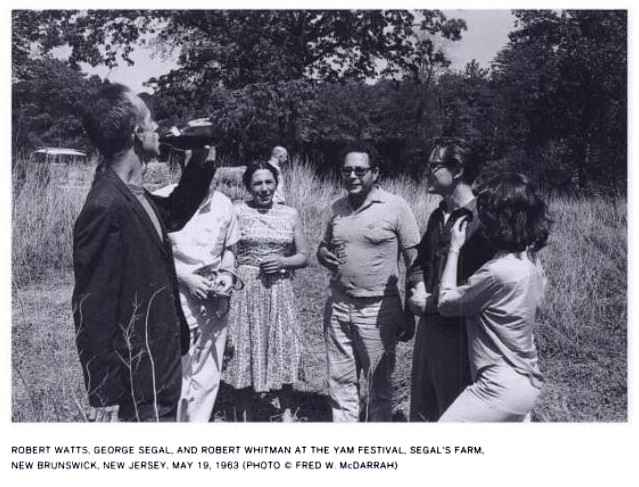 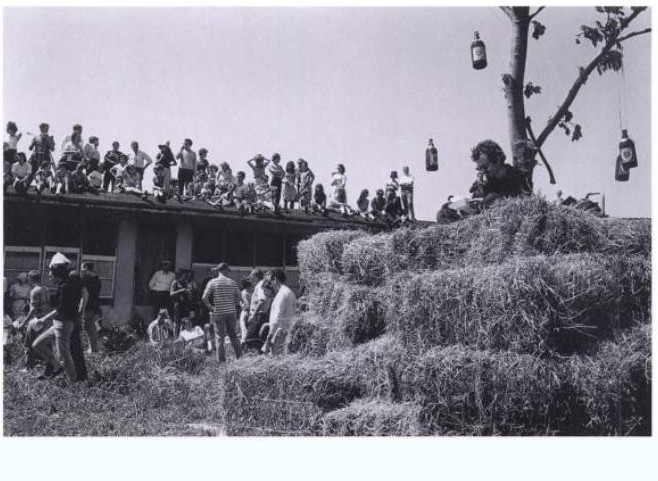 LA MONTE YOUNG ON HAY MOUND WITH HANGING BEER BOTTLES. 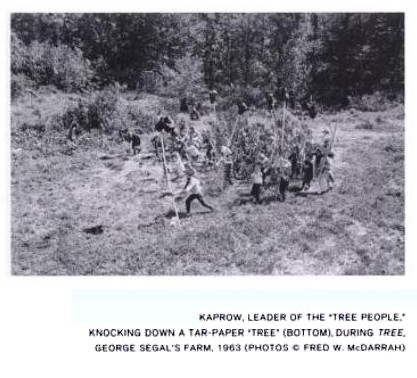 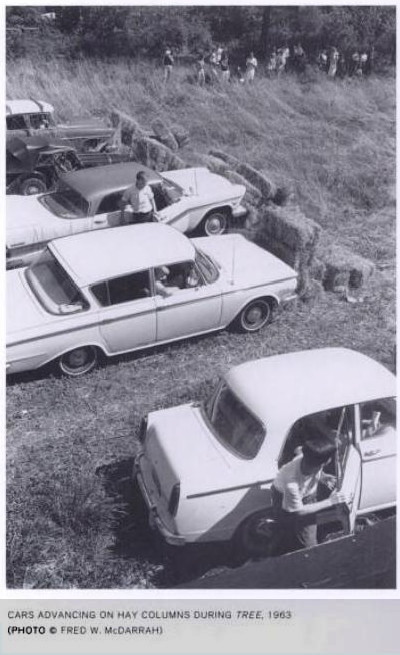 |
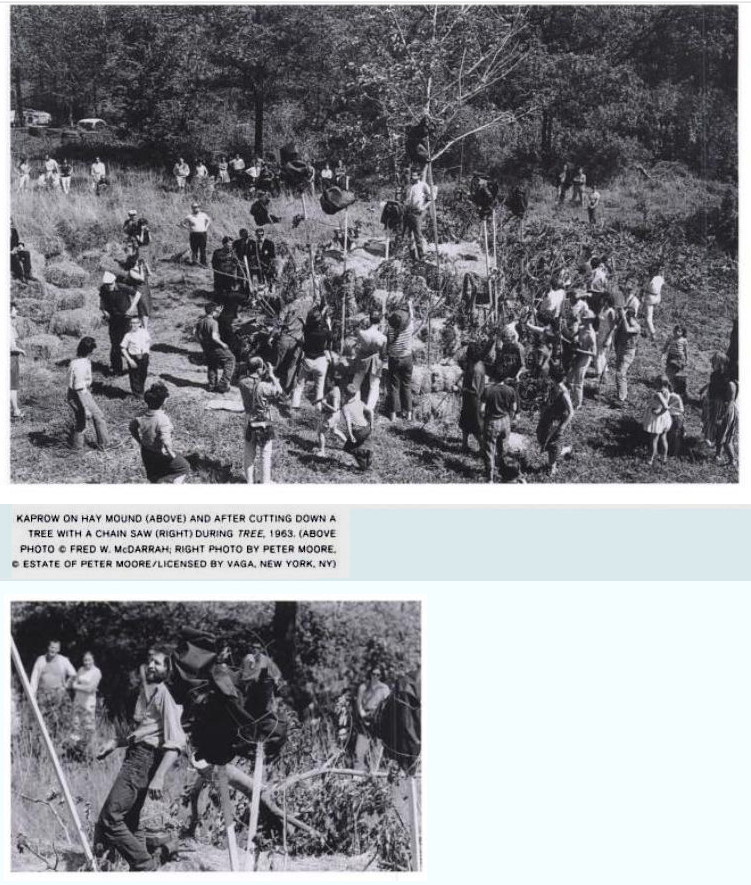 |
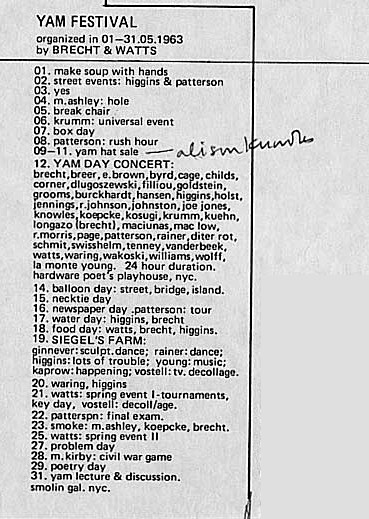 George Maciunas, "Diagram of Historical Development of Fluxus and Other 4 Dimentional, Aural, Optic, Olfactory, Epithelial and Tactile Art Forms", (Incomplete), annotated by Alison Knowles, 1973 (The Gilbert and Lila Silverman Fluxus Collection Archives in The Museum of Modern Art Archives) — [more info George Maciunas] |  In "Off Limits: Rutgers University and the Avant-garde, 1957-1963", edited by Joan M. Marter, Simon Anderson, The State University and the Newark Museum, 1999, pp. 40-41 |
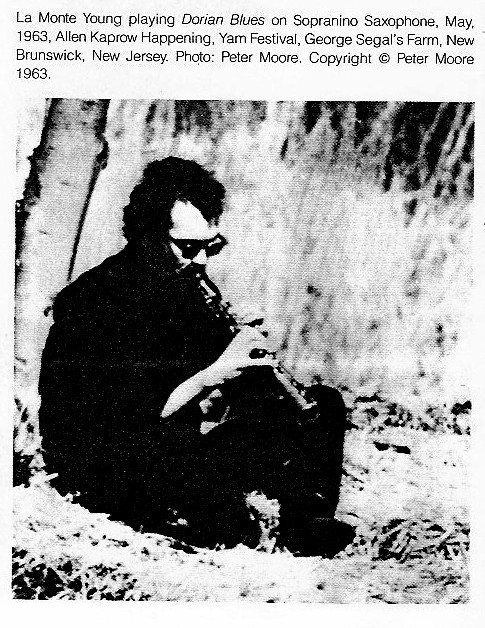 |
|
LA MONTE YOUNG (Improvisations 1962-1964) 19 X 63 B FLAT DORIAN BLUES (excerpt) (Recorded by La Monte Young and the Theater Of Eternal Music on October 19th, 1963) |
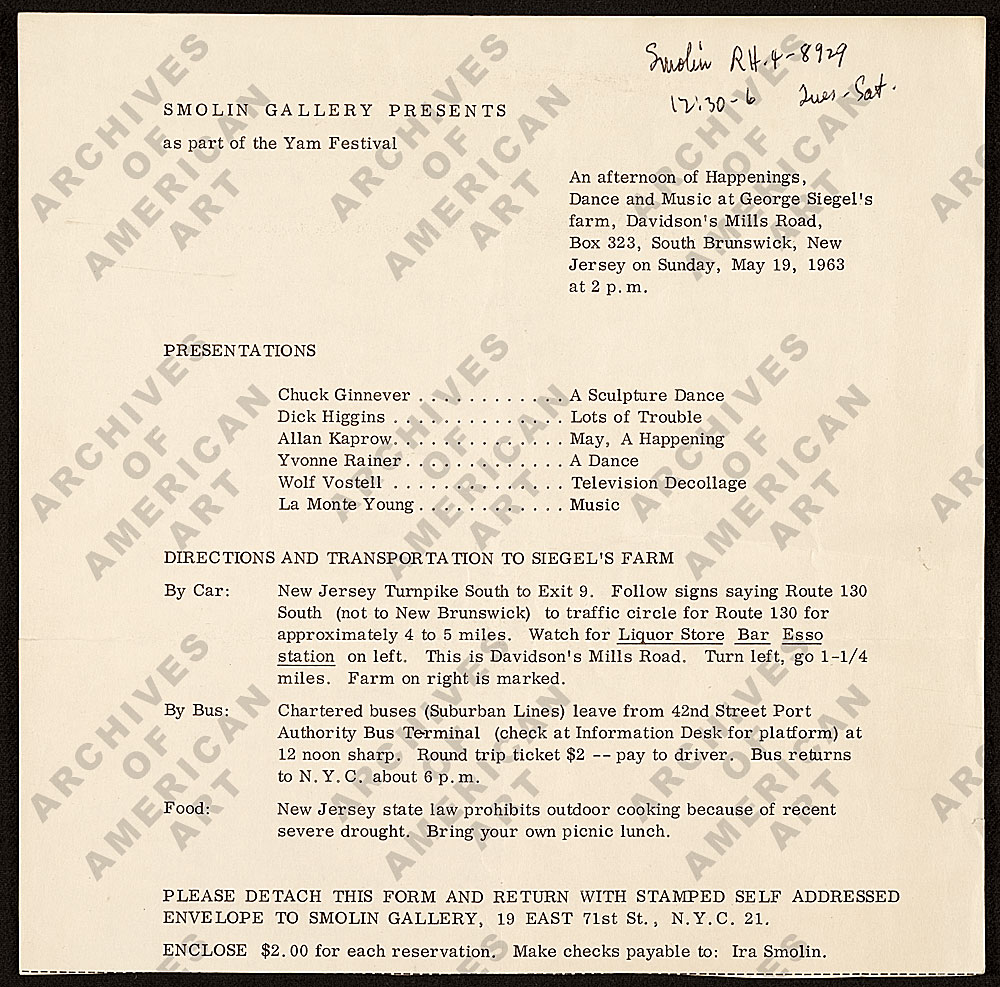 |
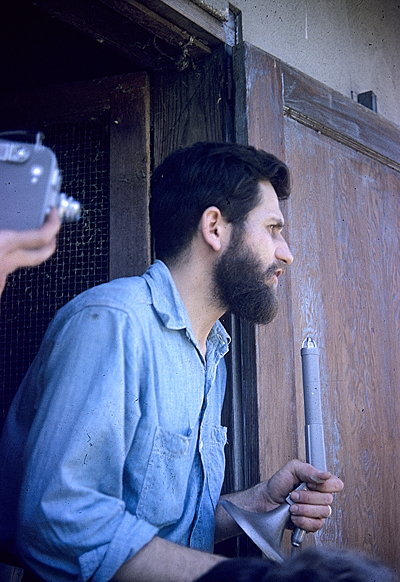 Allan Kaprow at George Segal's farm, 1963 May 19 (unidentified photographer) | 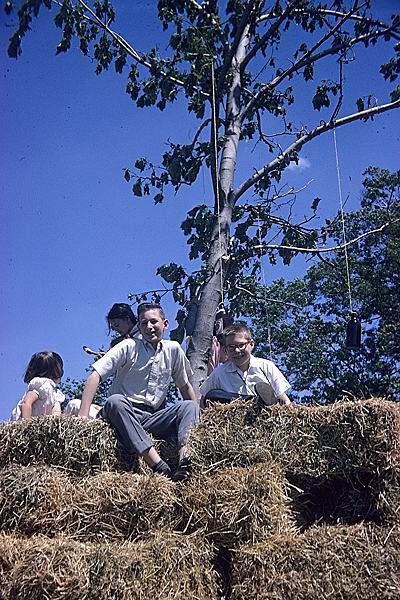 Children on hay bales at Allan Kaprow's Tree Happening, 1963 May 19 (unidentified photographer) |
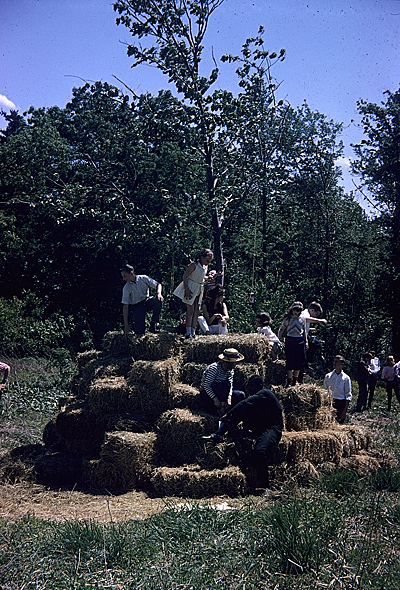 Participants in Allan Kaprows Tree Happening on George Segals farm (unidentified photographer) | 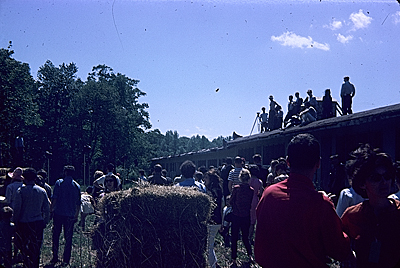 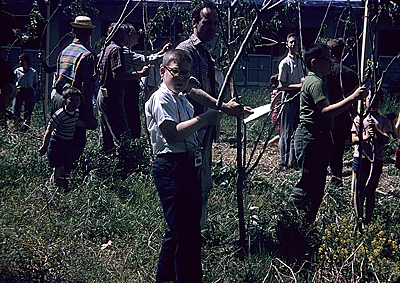 |
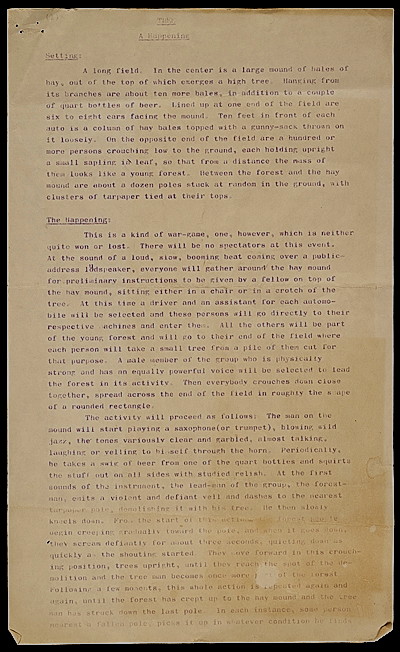 Allan Kaprow instructions, p.1 | 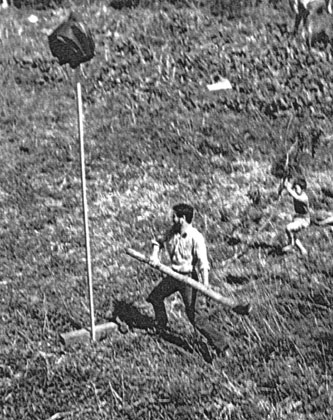 |
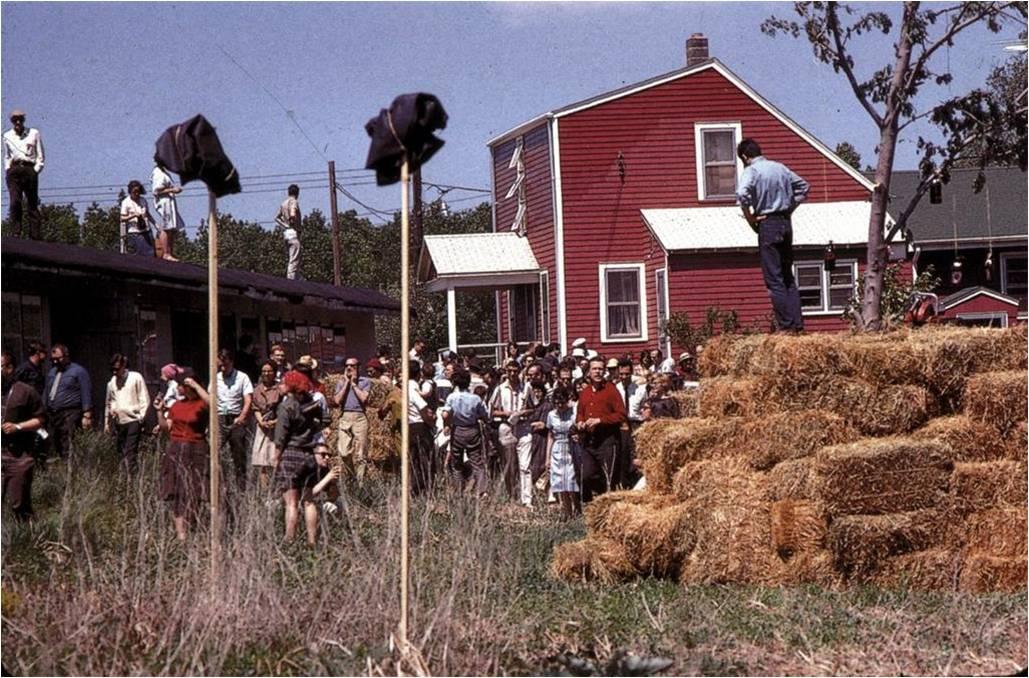 |
Sources :
- Jeff Kelley, "Childsplay: The Art of Allan Kaprow", Berkeley. University of California Press. 2007
- George Maciunas, "Diagram of Historical Development of Fluxus and Other 4 Dimentional, Aural, Optic, Olfactory, Epithelial and Tactile Art Forms", (Incomplete), annotated by Alison Knowles, 1973 (The Gilbert and Lila Silverman Fluxus Collection Archives in The Museum of Modern Art Archives) — more info George Maciunas — http://www.moma.org/interactives/exhibitions/2013/charting_fluxus/
- Archives of American Art — Caroline Lerner Goldsmith papers related to Allan Kaprow, 1963-1984, http://www.aaa.si.edu/collections/images/collection/caroline-lerner-goldsmith-papers-related-to-allan-kaprow-6316#1
- Walker Art Center Collection, http://www.walkerart.org/collections/artworks/yam-festival-calendar
- http://quod.lib.umich.edu/h/hart?type=boolean;view=thumbnail;rgn1=hart_ti;q1=Tree%2520Happening
- Allan Kaprow, "How to Make a Happening" (originally released by Mass Art in 1966, distributed by Something Else Press in 1968), http://primaryinformation.org/files/allan-kaprow-how-to-make-a-happening.pdf
http://ubu.com/sound/kaprow.html
Extras :
 Silkscreened cover with photo from Allan Kaprow's happening "Household", Cornell University, 1964 |
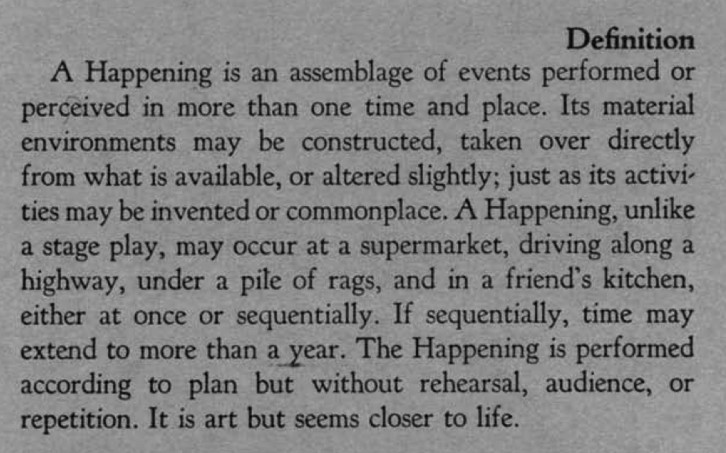
REFERENCES :
- NOTES ON THE ELIMINATION OF THE AUDIENCE (1966)
http://fr.scribd.com/doc/54887403/3/Allan-Kaprow-Notes-on-the-Elimination-of-the-Audience-1966 - SOME RECENT HAPPENINGS (1966)
http://theater.ua.ac.be/bih/pdf/1966-00-00_kaprow_somerecenthappenings.pdf - ASSEMBLAGES
http://theater.ua.ac.be/bih/pdf/1966-00-00_kaprow_assemblages.pdf — http://web.mit.edu/jscheib/Public/performancemedia/kaprow_assemblages.pdf - HOW TO MAKE A HAPPENING
http://primaryinformation.org/files/allan-kaprow-how-to-make-a-happening.pdf - ESSAYS ON THE BLURRING OF ART AND LIFE
https://monoskop.org/images/3/36/Kaprow_Allan_Essays_on_the_Blurring_of_Art_and_Life_with_Impurity_Experimental_Art_The_Meaning_of_Life_missing.pdf - INTERVIEW WITH ALLAN KAPROW (New York, Sept. 10, 1968)
http://www.aaa.si.edu/files/resources/OHProgram/PDF/kaprow68.pdf - ART WHICH CAN'T BE ART (1986)
http://readingbetween.org/artwhichcantbeart.pdf - L'ÉDUCATION DU NON-ARTISTE (partie 1) (1971)
https://head.hesge.ch/arts-action/IMG/pdf/Kaprow_fr_unartist.pdf - THE EDUCATION OF AN UN-ARTIST (part 1) (1971)
http://xenopraxis.net/readings/kaprow_education1.pdf - THE EDUCATION OF AN UN-ARTIST (part 2) (1972)
http://www.lot.at/sfu_sabine_bitter/kaprow-alan—the-education-of-the-un-artist-part-ii.pdf - THE EDUCATION OF AN UN-ARTIST (part 3) (1974)
http://www.lot.at/sfu_sabine_bitter/kaprow-allan—education-of-the-un-artist-part-iii.pdf - UNTITLED ESSAYS AND OTHER WORKS (1967)
http://artype.de/Sammlung/pdf/kaprow_untitled.pdf - HAPPENINGS IN THE NEW YORK SCENE (1961)
http://theater.ua.ac.be/bih/pdf/1961-00-00_kaprow_happeningsnewyork.pdf - JUST DOING (1996) (version française)
http://www.revue-proteus.com/articles/Proteus00-8.pdf - JUST DOING (1996) (English version)
http://www.yavanika.org/classes/reader/kaprowdoing.pdf - KARLHEINZ STOCKHAUSEN'S ORIGINALE directed by ALLAN KAPROW (1964) (a study by Mark Bloch)
http://www.panmodern.com/OnStockhausen-sOriginale.pdf
STUDIES :
- Altering a Fixed Identity: Thinking Through Improvisation (Anne Douglas, Critical Studies in Improvisation / Études critiques en improvisation, Vol 8, No 2 (2012))
http://www.criticalimprov.com/article/viewFile/2122/2834
EXCERPTS FROM "ASSEMBLAGES" :
Allan Kaprow developed techniques to prompt a creative response from the audience, encouraging audience members to make their own connections between ideas and events. These narrative strategies relied on a nonlinear sequencing of events, and the use of indeterminacy to shape the course of the Happening. Kaprow describes how a Happening might take place over an extended period, across vast distance, or in many places at once. His techniques reordered past, present, and future within a single work in a remarkable variety of arrangements. The decentralization of authorship, location, and narrative – here united by the intent of the artist and the imagination of the participating audience members – foreshdows nonlinear forms in digital media that make use of interactive and networked technology to expand the boundaries of time and space. (Randall Packer)
[A] The line between art and life should be kept as fluid, and perhaps indistinct, as possible.
[B] Therefore, the source of themes, materials, actions, and the relationships between them are to be derived from any place or period except from the arts, their derivatives, and their milieu.
[C] The performance of a Happening should take place over several widely spaced, sometimes moving and changing, locales. [...] First along several points on a heavily trafficked avenue; then in several rooms and floors of an apartment house where some of the activities are out of touch with each other; then on more than one street; then in different but proximate cities; finally all around the globe. On the one hand, this will increase the tension between the parts, as a poet might by stretching the rhyme from two line to ten. On the other, it permits the parts to exist more on their own, without the necessity of intensive coordination. Relationships cannot help being made and perceived in any human action, and here they may be of a new kind if tried-and-true methods ar given up. Even greater flexibility can be gotten by moving the local itself. A Happening could be composed for a jetliner going fron New York to Luxembourg with stopovers at Gander, Newfoundland, and Reykjavik, Iceland. Another Happening would take place up and down the elevators of five tall buildings in midtown Chicago. The images in each situation can be quite disparate : a kitchen in Hoboken, a "pissoir" in Paris, a taxi garage in Leopoldville, and a bed in some small town in Turkey. Isolated points of contact may be maintained by telephone and letters, by a meeting on a highway, or by watching a certain television program at an appointed hour. Other parts of the work need only be related by theme, as when all locales perform an identical action which is disjoined in timing and space. But none of these planned ties are absolutely required, for preknowledge of the Happening's cluster of events by all participants will allow each one to make his own connections. [...]
[D] Time, which follow closely on space considerations, should be variable and discontinuous. [...] There need be no rhythmic coordination between the several parts of a Happening unless it is suggested by the event itself : such as when two persons must meet at a train departure at 5:47pm. Above all, this is "real" or "experienced" time, as distinct from conceptual time. If it conforms to the clock used in the Happening, as above, that is legitimate, but if it does not because a clock is not needed, that is equally legitimate. [...] Time retarded as space extended.
[E] Happenings should be performed once only. (could not be repeated) [...] Nevertheless, there is a special instance of where more than one performance is entirely justified. This is the score or scenario which is designed to make every performance significantly different from the previous one. (left open for accidentals or improvisations) (that make the outcome always uncertain)
[F] It follows that audiences should be eliminated entirely. All the elements — people, space, the particular materials and character of the environment, time — can in this way be integrated. And the last shred of theatrical convention disappears. For anyone once involved in the painter's problem of unifying a field of divergent phenomena, a group of inactive people in the space of a Happening is just dead space. It is no different from a dead area of red paint on a canvas. Movements call up movements in response, whether on a canvas or in a Happening. A Happening with only an empathic response on the part of a seated audience is not a Happening but stage theatre.
Then, on a human plane, to assemble people unprepared for an event and say that they are "participating" if apples are thrown at them or they are herded about is to ask very little of the whole notion of participation. Most of the time the response of such an audience is half-hearted or even reluctant, and sometimes the reaction is vicious and therefore desctructive to the work (though I suspect that un numerous instancs of violent reaction to such treatment it was caused by the latent sadism in the action, which they quite rightly resented). After a few years, in any case, "audience response" proves to be so predictably pure cliché that anyone serious about the problem should not tolerate it, any more that the painter should continue the use of dripped paint as a stamp of modernity when it has been adopted by every lampshade and Formica manufacturer in the country. [...]
There is an exception, however, to restricting the Happening to participants only. When a work is performed on a busy avenue, passersby will ordinarily top and watch, just as they might watch the demolition of a building. These are not theatre-goers and their attention is only temporarily caught in the course of their normal affairs. They might stay, perhaps become involved in some unexpected way, or they will more likely move on after a few minutes. Such persons are authentic parts of the environment. [...]
Finally, there is this additional exception to the rule. A Happening may be scored for "just watching". Persons will do nothing else. They will watch things, each other, possibly actions not performed by themselves, such as a bus stopping to pick up commuters. This would not take place in a theatre or arena, but anywhere else. It could be an extremely meditative occupation when done devotedly ; just "cute" when done indifferently. (observer, closer to the role of a Greek chorus ; at other moments the active and obeserving roles would be exchanged, so that by reciprocation the whole meaning of watching would be altered, away from something like spoon-feeding, toward something purposive, possibly intense.)
[G] The composition of a Happening proceeds exactly as in Assemblages and Environments, that is, it is evolved as a collage of events in certain spans of time and in certain spaces.